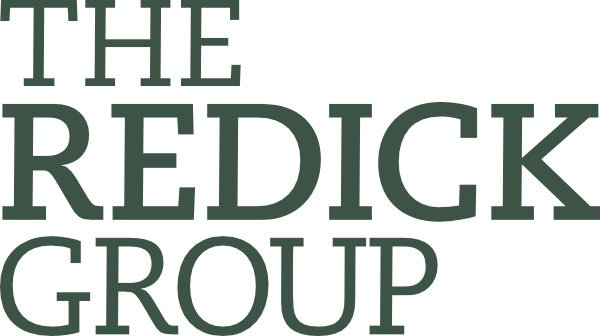Chief People Officers: Leading Through Complexity, Change, and Contradiction
Today’s Chief People Officers face a unique paradox: workforce strategy is now central to business success, yet expectations and constraints have never been higher. Amid rapid advances in AI and a shifting global talent landscape, CHROs must drive culture, innovation, and value—often with limited resources.
“Working with you felt like an immediate connection—the chemistry, shared experience, and your values resonated with me. From our first conversation, you helped me reframe the complexity of building healthy, growing workforces that retain top talent and drive company growth.”
At The Redick Group, we help CHROs and CPOs craft executive identities that reflect both strategic vision and pragmatic execution—always with an eye toward the standards of top search firms like Korn Ferry, Heidrick & Struggles, and Russell Reynolds.
Our work serves dual purposes: it builds credibility with stakeholders—workforces, investors, regulators, peers, and beyond—while discreetly positioning leaders for new opportunities. The content we co-develop with clients in extensive one-on-one sessions resonates publicly, enabling confidential career exploration without signaling intent to move.
We turn résumé writing, LinkedIn optimization, and board bio development into opportunities for self-reflection and strategic planning, blending the mechanics of career documentation with executive coaching that helps leaders clarify their philosophies and value.
Three case studies: Career storytelling from CHROs and CPOs
-
A U.S.-based Chief Human Resources Officer, fresh from an Ivy League executive coaching program, sought to develop materials for a boutique consultancy while discreetly exploring new leadership opportunities. After successfully integrating the decentralized HR infrastructure of a multibillion-dollar network of marketing agencies, she faced the challenge of viewing her career as a cohesive body of work rather than a series of isolated achievements.
Outcome: Through our collaboration, we reframed her professional narrative around the architecture of four international organizations and eight major business and HR transformations—each impacting workforces of up to 30,000 employees. This strategic shift in perspective not only informed the materials for her emerging consultancy but also elevated her entire suite of public-facing communications, positioning her as a transformative leader with a global impact.
-
A compensation and benefits executive turned Chief People Officer had never paused to reflect on his career trajectory or articulate a unified narrative to steer his future. He struggled to reconcile his investment banking roots with his more recent leadership roles in fintech.
Outcome: Through our collaboration, we developed a strategy that reframed his diverse experiences as complementary strengths, rather than disconnected chapters. The new narrative showcased his leadership in building, redesigning, and turning around six human capital functions for organizations with up to 50,000 employees, supporting strategic integrations, restructurings, and up to sevenfold growth. This process fundamentally changed how he perceived and communicated his career as he pursued new opportunities, equipping him with a credible and flexible story for the next phase of his professional journey.
-
Referred by a C-suite colleague, a three-time CHRO sought guidance in developing his personal brand and updating his career materials after a new CEO installed their own executive team. Anticipating what would likely be his final leadership role before retirement, he aimed to define the brand pillars that would best support his next step. A persistent challenge was how to address—or strategically reframe—his early career as a church pastor, a chapter he had long struggled to narrate coherently.
Outcome: We approached this challenge by digging deep into his professional journey, allowing the facts to speak for themselves. Together, we crafted a unified narrative that transformed what had once felt like a significant fracture in his story into a source of credibility and flexibility. The result was a cohesive personal brand that not only honored his diverse experiences but also positioned him for his next, and possibly final, executive role.
“Your use of AI as a tool for creativity and research was unexpected. Somehow you blend curiosity and restraint (as I read somewhere on your site) with an almost magical depth of experience that totally got my juices going. ”
The Five Eras of CHRO and CPO Evolution
The CHRO and CPO roles have evolved from administrative stewards of compliance and payroll to strategic leaders driving business growth, innovation, and resilience. Over the past century, these roles have shifted from managing risk and bureaucracy to shaping culture, leading digital transformation, and delivering measurable enterprise value.
Today, CHROs and CPOs are expected to anticipate workforce trends, lead AI-powered talent strategies, and navigate complex global risks—responsibilities that demand unprecedented agility, influence, and vision. This evolution is best understood through the five distinct eras that have defined the changing mandate and expanding impact of HR leadership.
-
The CHRO role traces its origins to 1901, when National Cash Register Company established the first "personnel department" to handle strikes and worker grievances—a purely reactive, compliance-focused function. For most of the 20th century, HR leaders managed payroll, benefits, and labor law adherence, with no seat at the strategic table. Resources were allocated to minimize legal risks and administrative costs, cementing HR’s reputation as a bureaucratic necessity rather than a value driver.
This era’s legacy persists in modern challenges: 42% of CHROs still report spending disproportionate time on transactional tasks despite their expanded strategic mandates. The administrative foundation, however, established essential workforce governance frameworks that later enabled strategic pivots.
-
The late 20th century saw CHROs like Xerox’s Patricia Nazemetz pioneer strategic workforce planning, aligning hiring practices with business growth objectives. Globalization and technological advancements forced organizations to view talent as a competitive differentiator, shifting HR’s focus from compliance to capability building. CHROs began partnering with CFOs on headcount budgeting and with CEOs on leadership pipelines, though often without formal authority over business decisions.
This transition introduced persistent resource gaps. While expected to "think strategically," many HR leaders lacked analytics tools or cross-functional influence to translate talent initiatives into business outcomes—a disconnect that still impacts 31% of CPOs struggling to quantify their team’s ROI.
-
The rise of employer branding and the "war for talent" propelled CHROs into cultural leadership roles. Tech giants like Google and Salesforce demonstrated that workplace experience directly impacts innovation and retention, prompting boards to demand CPOs who could engineer psychological safety, diversity initiatives, and purpose-driven engagement.
This era’s emphasis on soft skills often clashed with rigid HR infrastructures. While 68% of organizations increased culture-related investments post-2020, only 29% equipped HR teams with predictive analytics to measure initiative effectiveness. CPOs became de facto "culture therapists," mediating between employee well-being demands and executive cost-cutting pressures—a balancing act that strained resources and credibility.
-
The pandemic accelerated HR’s tech adoption, forcing CHROs to lead AI integration, remote work infrastructure, and data-driven decision-making. Responsibilities expanded to include cybersecurity oversight (for distributed teams), digital upskilling platforms, and algorithmic bias mitigation—areas requiring collaboration with CIOs and CTOs.
Despite increased tech budgets, 57% of CHROs reported inadequate IT support to implement AI tools effectively, leading to fragmented systems and employee frustration. This era highlighted the peril of half-measures: investing in technology without parallel investments in change management or skills development often worsened productivity gaps.
-
Modern CHROs and CPOs now operate as chief productivity officers, directly accountable for revenue-linked metrics like workforce ROI, innovation cycle times, and cross-functional collaboration efficiency. They’re tasked with:
Designing AI-augmented talent ecosystems that anticipate skill obsolescence
Leading ESG initiatives tied to investor relations and regulatory compliance
Managing geopolitical workforce risks, from immigration policies to regional labor shortages
Yet, a 2025 Gartner study found that only 18% of HR departments have the predictive analytics or scenario-planning tools required for these responsibilities—a resource gap that forces many executives to "navigate blind" in critical decision-making.
As CHROs and CPOs continue to navigate these evolving expectations, strategic storytelling and executive identity development are more critical than ever. Our services help you articulate your unique contributions and position yourself as a leader at the forefront of your field.
Offerings and what to expect
CHRO Resume & Bio Development
Your people leadership portfolio should reflect the same experience, intellect, and discretion that your peers will expect from you when interacting with you in the C-suite. If we work together, we’ll ensure you’re prepared for your next leadership opportunity—whether it’s a new role, board position, or career transition.
-
Define target companies and map them to industry expertise or sector knowledge
Mind the distinction between strategic leadership and tactical execution
Bring forward governance if you’re board position might be in your future
Contextualize your experience within the size, market position, growth stage, and international footprint of companies where you’ve worked, or companies you’ve advised
Emphasize your ability to navigate complex external factors such as economic shifts, industry disruptions, social changes, and significant corporate events (e.g., mergers, acquisitions, restructurings)
Articulate your experience with complex matters such as board structuring and committees, conflicts of interest, activist defense, and executive misconduct
Present experience related to executive hiring, compensation, and succession planning
Showcase experience with business challenges (e.g., digital transformation, cybersecurity, ESG), changes in regulatory frameworks (e.g., Dodd-Frank, Sarbanes-Oxley, PSD2, GDPR), and other emerging trends such as generative AI adoption, geopolitical uncertainties, and evolving stakeholder expectations
Identify and articulate the specific dimensions of leadership that will add value to a board
Narrate diversity considerations in terms of skills and background, not just gender and race
Highlight thought leadership and industry reputation, including presentations, publications, patents, and other credibility signals.
List other board service (e.g., nonprofits, private companies), committee leadership, and professional association memberships
LinkedIn Profile Optimization for CHROs
Your LinkedIn presence should be as compelling and credible as your private C-suite materials. We’ll help you condense and elevate your narrative for public scrutiny, using algorithm-friendly keywords and a tone that matches your experience and aspirations—while maintaining discretion if you’re exploring new roles confidentially.
-
Condense, elevate, and sometimes reconceive the confidential narrative we developed for your resume and board bio so it’s appropriate for public evaluation
Develop an algorithm-centric keyword strategy to anticipate the behaviors of recruiters who are searching for someone with your background
Establish a tone of voice consistent with your experience and personality, as well as the expectations of your target company
Use strategic language to map your current activities to your future plans
Maintain discretion if you’re planning to explore roles confidentially and need to preserve sensitive professional relationships
Thinking about a career move? Choose an entry point.
At a career crossroads?
Career decision-making, résumé writing, and LinkedIn positioning—helping leaders move on their terms.
Potential at every stage
Career coaching for today’s leaders and tomorrow’s visionaries—reframing pasts, transforming futures.




